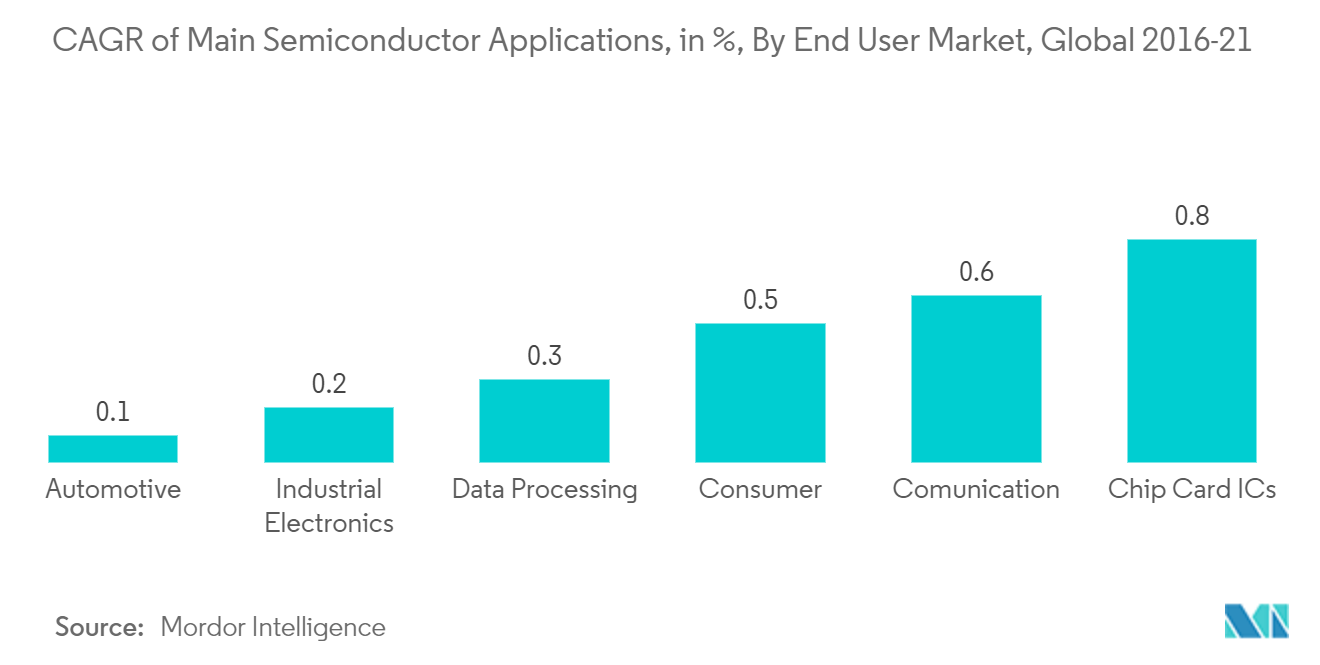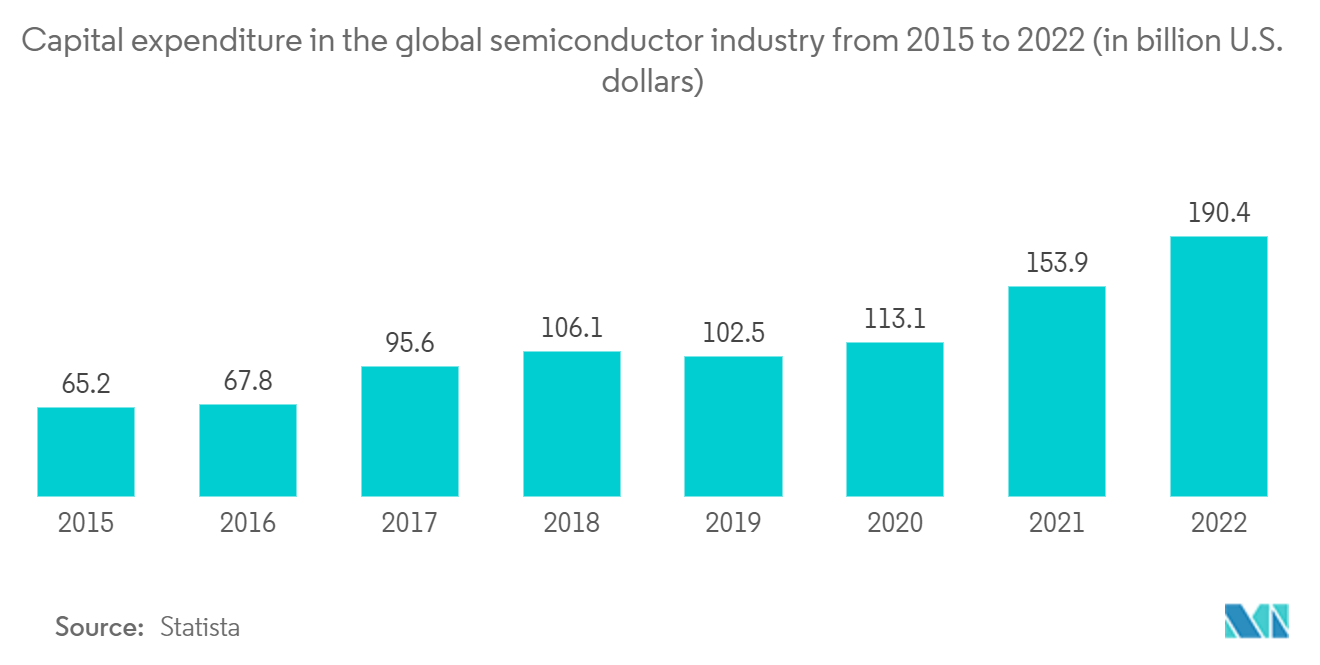Market Trends of Asia-Pacific Semiconductor Etch Equipment Industry
This section covers the major market trends shaping the APAC Semiconductor Etch Equipment Market according to our research experts:
Power devices is expected to grow in the market
- Power devices leverages the features of solid-state electronics for the control and conversion of electric power. These electronic devices can be directly used in the power processing circuits to control or convert electric power. These devices are primarily used as switches or rectifiers in circuits and systems and have become a key component of power electronics technology.
- With the demand for high-power devices increasing in several electronics applications, including the industrial, automotive, data center, and energy industries, the Power devices manufacturing industry is expected to witness significant growth.
- For instance, in March 2021, Toshiba Electronic Devices & Storage Corporation announced the expansion of the production capacity for power devices with the construction of a 300-millimeter wafer fabrication facility at Kaga Toshiba Electronics Corporation in Japan.
- Similarly, in February 2022, German chipmaker Infineon Technologies unveiled its plans to invest more than EUR 2 billion in a new frontend fab in Kulim, Malaysia. Considering the growing demand, the company has been increasing investments in expanding its manufacturing capacity for GaN and SiC to maintain its position across the entire range of power semiconductors.
- Such instances also create a favorable market scenario for the studied market, as etching is a key step in the manufacturing process of power devices. Furthermore, it is also driving innovations in the studied market as the equipment manufacturers are increasing their investments in R&D to meet the evolving demand of their customers.

China is expected to hold the major market share in the APAC region
- China is witnessing multiple investments from various companies, including TSMC, as well as local companies such as Huawei, which are entering into producing their chips as the US embargo has made it significantly difficult for Huawei to buy chips, so it has no other alternative but to develop the capability to manufacture for itself.
- In May 2021, TSMC will invest USD 2.8 billion in China to ramp up auto chip production and build new Nanjing facilities amid severe shortages. Whereas Huawei intends to produce chips based on the 45nm manufacturing process, where the fab will not be a solution for its smartphones, it may make networking chips for Huawei's 5G kit by 2022.
- The rising demand for electric vehicles fuels the rapid expansion of the APAC automotive semiconductor industry. Automobile manufacturers will continue to innovate, create, and develop self-driving cars, attracting various customers in key automotive manufacturing countries.
- The growing fully-autonomous automobiles are heavily influenced by technological advancements, consumer willingness to accept fully-automated vehicles, pricing, and suppliers' and OEMs' capacity to address significant concerns about vehicle safety. According to these factors, the automotive and semiconductor industries are always concentrating on enhancing technologies, negotiating raw material prices, and finally combining cars with reliable technology.


